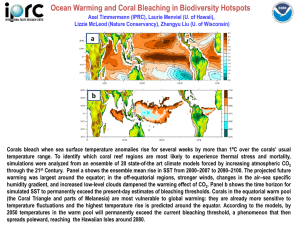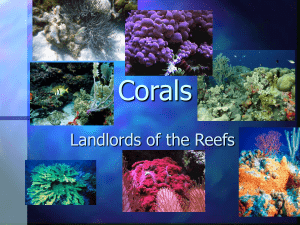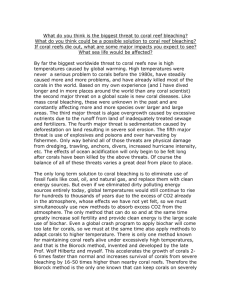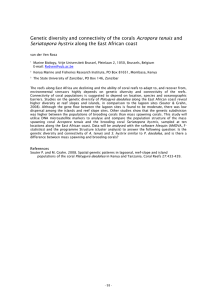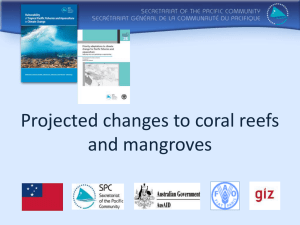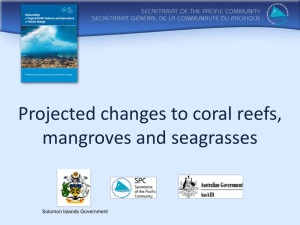Sawyer, Sara - Global Warming and Coral Bleaching
advertisement
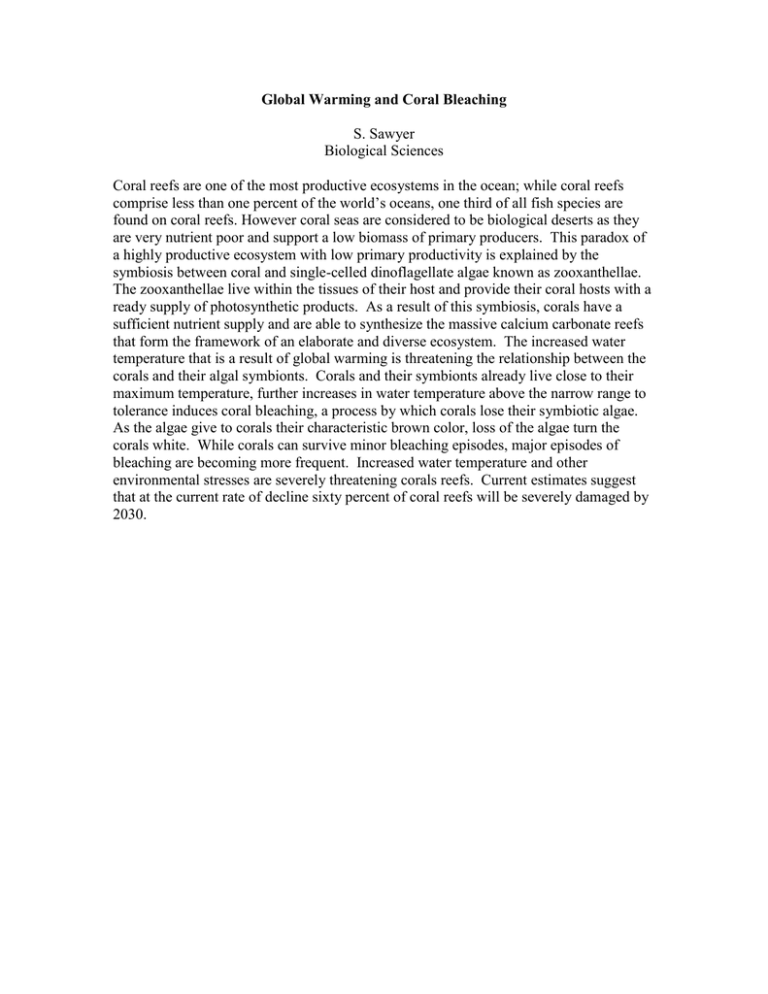
Global Warming and Coral Bleaching S. Sawyer Biological Sciences Coral reefs are one of the most productive ecosystems in the ocean; while coral reefs comprise less than one percent of the world’s oceans, one third of all fish species are found on coral reefs. However coral seas are considered to be biological deserts as they are very nutrient poor and support a low biomass of primary producers. This paradox of a highly productive ecosystem with low primary productivity is explained by the symbiosis between coral and single-celled dinoflagellate algae known as zooxanthellae. The zooxanthellae live within the tissues of their host and provide their coral hosts with a ready supply of photosynthetic products. As a result of this symbiosis, corals have a sufficient nutrient supply and are able to synthesize the massive calcium carbonate reefs that form the framework of an elaborate and diverse ecosystem. The increased water temperature that is a result of global warming is threatening the relationship between the corals and their algal symbionts. Corals and their symbionts already live close to their maximum temperature, further increases in water temperature above the narrow range to tolerance induces coral bleaching, a process by which corals lose their symbiotic algae. As the algae give to corals their characteristic brown color, loss of the algae turn the corals white. While corals can survive minor bleaching episodes, major episodes of bleaching are becoming more frequent. Increased water temperature and other environmental stresses are severely threatening corals reefs. Current estimates suggest that at the current rate of decline sixty percent of coral reefs will be severely damaged by 2030.



